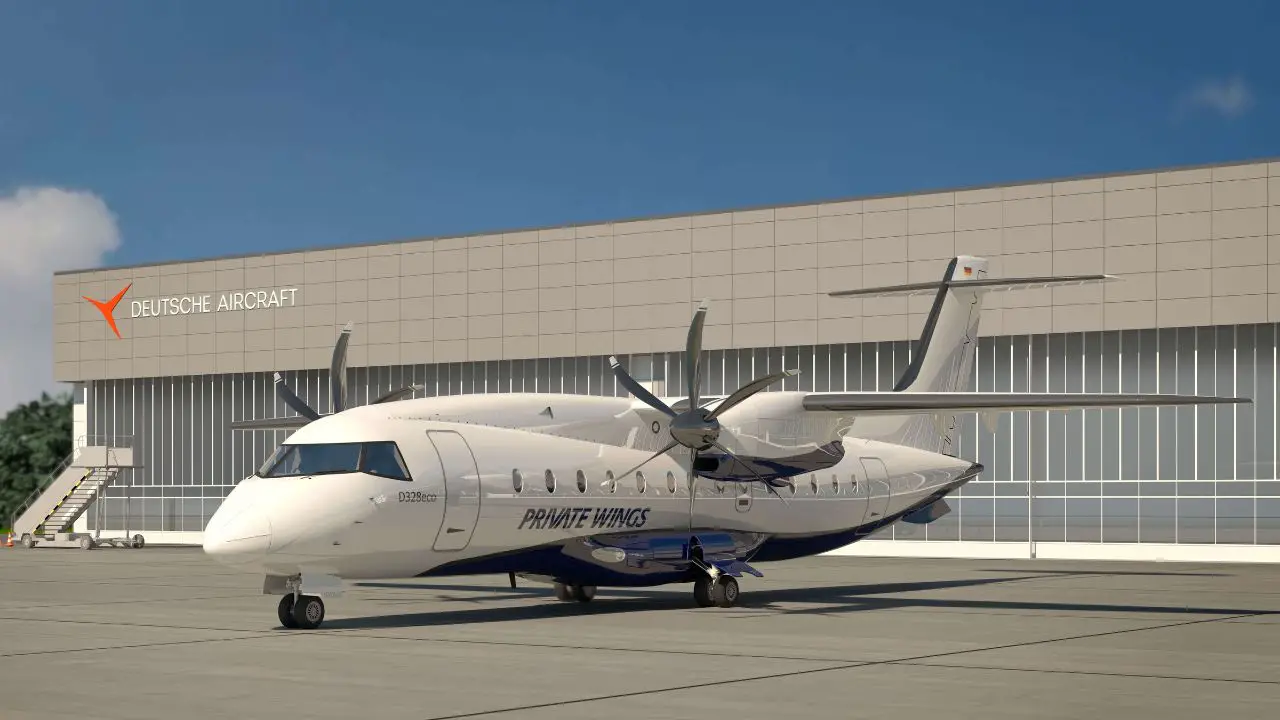The Dornier 328 regional turboprop was once considered a revolutionary development in the field of regional aviation. Developed in the early 1990s, it was intended to provide a fast, silent, and comfortable alternative to the aging commuter aircraft of the era. It was rapidly adopted by regional airlines in search of cost-effective and dependable solutions due to its advanced features, including a spacious cabin, modern avionics, and efficient turboprop engines. However, despite its technological advantages and optimistic start, the Dornier 328’s journey ended abruptly. The aircraft’s final components were manufactured more than two decades ago, and the program was abruptly terminated in 2002 as a result of Fairchild Dornier’s bankruptcy. Following this, the company and its subsequent owners concentrated exclusively on maintaining the airworthiness of the existing fleet, rather than attempting to restart production.
In an extraordinary turn of events, the same hangar that was previously used to assemble the original Dornier 328 was transformed into the site of the inception of a new era in regional aviation. Deutsche Aircraft, a German company with American origins, unveiled the first prototype of the D328eco, a significantly modernized and expanded version of the original aircraft. This new model is not merely a technical improvement; it is also a symbolic resurgence of a cherished legacy. The D328eco is engineered to satisfy the requirements of the contemporary market, featuring a longer fuselage that can accommodate up to 40 passengers, state-of-the-art avionics, and engines that are both more environmentally friendly and potent.
The D328eco is distinguished by its dedication to operational efficiency and sustainability. It is designed to operate on 100% sustainable aviation fuel, thereby significantly decreasing its environmental impact in comparison to previous models. The aircraft is also equipped with sophisticated digital flight decks and systems that facilitate maintenance, reduce pilot workload, and improve safety. It is particularly well-suited for regional routes that serve remote or marginalized communities due to its exceptional short-field capabilities and high cruising speed. Furthermore, the aircraft’s contemporary cabin and amenities are intended to provide passengers with a level of comfort and convenience that is comparable to that of mainline jets.
Deutsche Aircraft’s decision to revive and reinvent the Dornier 328 as the D328eco is not merely a business decision; it is an attempt to reestablish Germany’s presence in the competitive world of regional aircraft manufacturing. The company aspires to attract regional airlines that are seeking to replace aging fleets and comply with new environmental standards by integrating modern technology, proven design, and a strong emphasis on sustainability. The Dornier 328’s original concept’s enduring allure is evident in the D328eco prototype’s rollout, which is a bold step toward influencing the future of regional aviation. As the D328eco prepares for flight testing and its eventual entry into service, it carries the aspirations of a new generation of engineers, pilots, and passengers who are eager to witness the Dornier 328’s legacy soar once more.
Deutsche Aircraft will encounter formidable competition in the regional turboprop market from established manufacturers, including ATR, De Havilland Canada, and Pilatus Aircraft, in the forthcoming decade. ATR, which is known for its operational flexibility and fuel efficiency, is the global champion in regional turboprops with its ATR 42 and ATR 72 models. Another significant participant is De Havilland Canada’s Dash 8 series, which is particularly regarded for its adaptability to diverse environments and performance on difficult routes. De Havilland is currently engaged in the development of hybrid-electric propulsion technologies to preserve its competitive advantage and improve sustainability. Pilatus Aircraft, which is known for the PC-12, is a company that concentrates on niche markets due to its reputation for versatility and dependability. Furthermore, Airbus SE and Textron Aviation (which operates the Beechcraft and Cessna trademarks) are noteworthy competitors, each of which provides various regional and turboprop aircraft. The market is also experiencing the emergence of new entrants, particularly in Asia, such as COMAC and Mitsubishi Aircraft Corporation. Additionally, there is a broader industry movement toward sustainable and hybrid-electric propulsion technologies, which will further intensify competition and innovation in this segment.
Deutsche Aircraft has already received 34 letters of intent from potential customers, which suggests a tangible demand for the type as a modern, efficient replacement for aging regional fleets. The signing of a letter of intent with an undisclosed customer for up to four D328eco aircraft further demonstrated the company’s appetite for the market. Despite not publicly announcing any firm orders, Deutsche Aircraft has reported that it is currently in discussions with approximately 60 potential customers worldwide. This indicates that regional airlines and special mission operators are actively pursuing more sustainable and cost-effective solutions. The D328eco’s rollout has garnered substantial attention from industry stakeholders, thereby supporting its potential to satisfy the requirements of operators seeking to modernize their fleets with next-generation turboprops.
Official Website of Youtube Channel – Altitude Addicts
